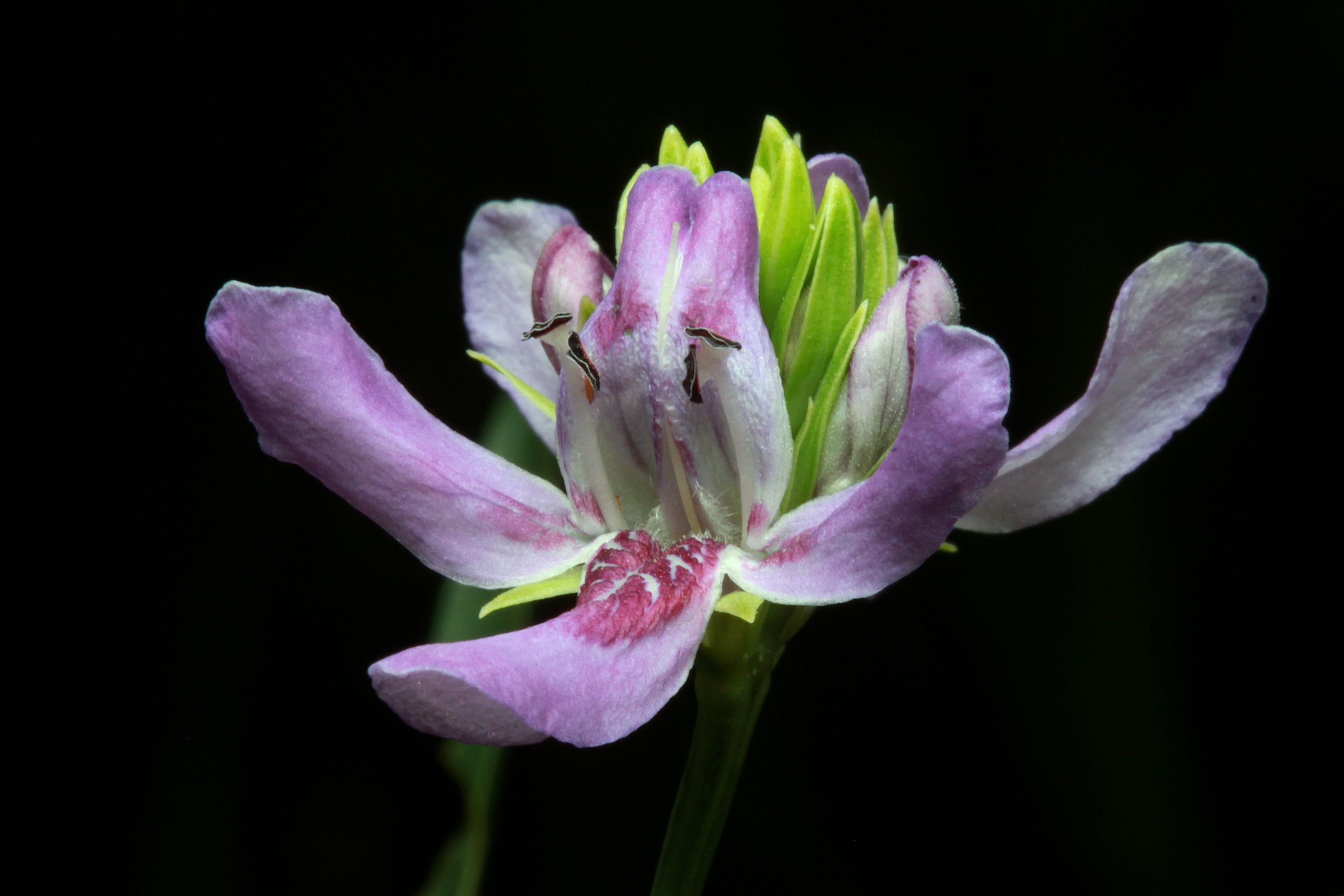American water willow
(Justicia americana)

Description
Justicia americana, the American water-willow, is a herbaceous, aquatic flowering plant in the family Acanthaceae native to North America. It is the hardiest species in the genus Justicia, the other members of which being largely tropical and subtropical, and it is able to survive as far north as USDA zone 4. It is common throughout its range. The grows partially submerged in still or flowing water, reaching up to 40 cm (16 in) tall from a creeping rhizome. The leaves are 10 cm (3.9 in), opposite, sessile, linear or lanceolate, and slightly crenulated. The flowers are bicolored, born in opposite arrangement on spikes 3 cm (1.2 in) long coming off a peduncle 10 cm (3.9 in) long. Color ranges from white to pale lavender with the upper corolla lip pale violet or white, arching over the lower lip mottled in dark purple. The lateral lobes are unadorned or slightly blushed. The anthers are purplish-red rather than the usual yellow. Flowering is from May to October. The fruit of this plant is a small brown capsule. The creeping rhizome allows Justicia americana to form large colonies on or near the shorelines of still or slow waters in lakes and rivers, and on rocky riffles and shoals in faster flowing rivers. Its rhizomes and roots provide important spawning sites for many fish species and habitat for invertebrates. Justicia is a genus of flowering plants in the family Acanthaceae. It is the largest genus within the family, encompassing around 700 species with hundreds more as yet unresolved. They are native to tropical to warm temperate regions of the Americas, India and Africa. The genus serves as host to many butterfly species, such as Anartia fatima. Common names include water-willow and shrimp plant, the latter from the inflorescences, which resemble a shrimp in some species. The generic name honours Scottish horticulturist James Justice (1698–1763). They are closely related to Pachystachys. They are evergreen perennials and shrubs with leaves which are often strongly veined; but they are primarily cultivated for their showy tubular flowers in shades of white, cream, yellow, orange, violet or pink. Excepting Justicia americana L., they are not hardy below 7 °C (45 °F), so may be grown under glass in frost-prone areas.
Taxonomic tree:







